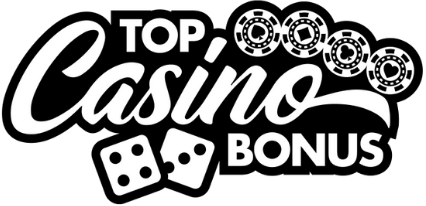How to approach multi-table poker tournaments (MTTs) – early stages
You wouldn’t believe how many chips go up in smoke in the early stages of multi-table poker tournaments (MTTs) simply because players get antsy or overplay hands. Truth is, what you do in the first hour of an MTT might not win you the tournament, but it can damn sure lose it for you. This stage is all about laying foundations, calculating edge, managing risk, and setting the tone. We’re not here to gamble, we’re here to outlast. Let’s get into the nitty-gritty.
Table of contents
Understanding the early stage landscape
When you sit down at the table in the early stages, blinds are small, typically 25/50 or 50/100, and stacks are deep. You’re looking at an average of 100 big blinds or more. This is the only phase where stack depth allows true poker, hands can develop over all streets. That’s also where bad habits hide: loose calls, speculative hands out of position, and hero plays when the pot’s not worth fighting over.
Identifying player types early on
You’ve got to clock your table quickly. Pay attention, not just to the cards, but to the players. Who’s sipping coffee and folding everything? Who’s limping in every hand like they own the place? That info’s your goldmine. Tag the maniacs, the nits, the calling stations. Adjust accordingly. Against loose players, tighten up and wait for value. Against tight players, exploit their reluctance with selective aggression.
Playing tight, but not timid
I see it all the time, folks folding too much or betting too big, forgetting fundamentals. You want to be tight. Sure. But you don’t want to be predictable. There’s a huge difference between disciplined and cowardly. Let your position guide your range. Queen-Ten suited on the button? That’s a tool. Queen-Ten suited under the gun? Fool’s gold.
The importance of position and pot control
Position is everything, especially deep-stacked. If you’re out of position, you’re driving backward in a hurricane. Keep pots smaller unless you’re last to act and can dictate the action. Remember: just because you’ve got chips doesn’t mean you need to use them recklessly. Let the others hang themselves. They usually will.
Choosing the right hands to play
Early-stage hand selection isn’t just about what you play, but how you play it. Suited connectors, small pairs, and suited aces, those are speculative hands. They’ve got long-tail value. But here’s the catch most new players miss: they shine when you’ve got implied odds and positioning. Play them out of place, and they’re just chip drainers.
Leveraging speculative hands
Let’s say you’re on the button with 5♠6♠, five limpers ahead. That’s a green light. You can afford to call and see a cheap flop, especially with a read on limp-heavy tables. But don’t go chasing a gutshot if the board went wild and bets are ballooning. Stay disciplined. Use these hands as traps, not bailout plans.
Managing chip stack intelligently
Now, managing your chips early is like tending embers to make a fire, it takes patience. I’ve watched too many decent players fizzle out by defending the big blind with bottom pair and refusing to let go. Don’t get romantic with weak holdings. The goal early on isn’t accumulation, it’s survival with structure.
Knowing when to back off
If a pot’s building and you’ve got second pair out of position? Let it go. Live to see another hand. Preserve your effective stack. Even if you’re using a loose-passive image now and then, it can pay dividends later during bubble play. Set your traps for when they count most.
Reading timing and physical flow
Timing tells, betting cadence, stack shuffling, these matter. Use the early stage to pick up physical rhythms if you’re live, or timing patterns if you’re online. Who snap-calls middling bets without blinking? Who tanks with aces just to look weak? Catalog behaviors now. They’ll tell you what the cards won’t later on.
Table selection and mental discipline
You can’t control your draw in MTTs, but if you play online, choosing where you register counts. Some platforms offer softer fields, slower structures, better overlays. Keep your game tight, but get strategic with your field selection. For example, sites like Dunder Casino tend to draw a more recreational crowd, easier to exploit in early MTT phases.
Establishing your image
In the early stages, every action builds your table image. Raise with premiums, show down monsters, but don’t be afraid to float one or two speculative hands for the sake of misdirection. Just be subtle about it. You want to build an image that gets paid off later without being too obvious about your game plan.
Variance in early stage MTT strategy
Early on, variance management is crucial. Just like in slots, understanding volatility helps shape your strategy. Think of low-variance approaches as tight and controlled, while high-variance styles are aggressive and swingy. Know your risk appetite. If you’re unfamiliar with applying this concept in gaming, our guide on low, medium, and high variance slots breaks it down in a way that echoes MTT strategy surprisingly well.
Capitalizing on weak fields
Some casinos attract looser MTT fields. Tap into that. Whether you explore events at Chance Hill or the dynamic formats at Casumo, target sites known for soft competition. Manage expectations according to platform dynamics and remember: early survival compounds into late-stage leverage.
Stack-size targeting
If you’ve got over 80 big blinds, you’re maneuverable. Under 40, and you’re close to short-stack strategy. Recognize thresholds. I’ve seen players hold on to 20BB like it’s a full stack, refusing to shift gears. Don’t wait to be blinded out. Build in the early stages so you’re not on the ropes when the real battle begins.
Knowing when to pivot
Eventually, blinds go up, stacks shrink, and the game changes. But early-stage wisdom is about knowing how much to exert and when. You don’t need to be a lion out of the gate. Just don’t be prey. When your table starts breaking and players shift, adapt. That dynamism is what separates consistent winners from chip burners.
Final thoughts: discipline breeds deep runs
Let others shoot their shot too early. You? You’re collecting reads. Protecting chips. Setting a trap. You’ll thank yourself later. Like tracking the ebb and flow of a ship’s tide, early MTT stages demand patience, awareness, and small adjustments. Keep your mind sharp, your hands steady, and your ego in check. And if you’re looking for structured play, Casino Cruise offers MTTs aboard a well-oiled platform that rewards discipline over drama.





0 Comments